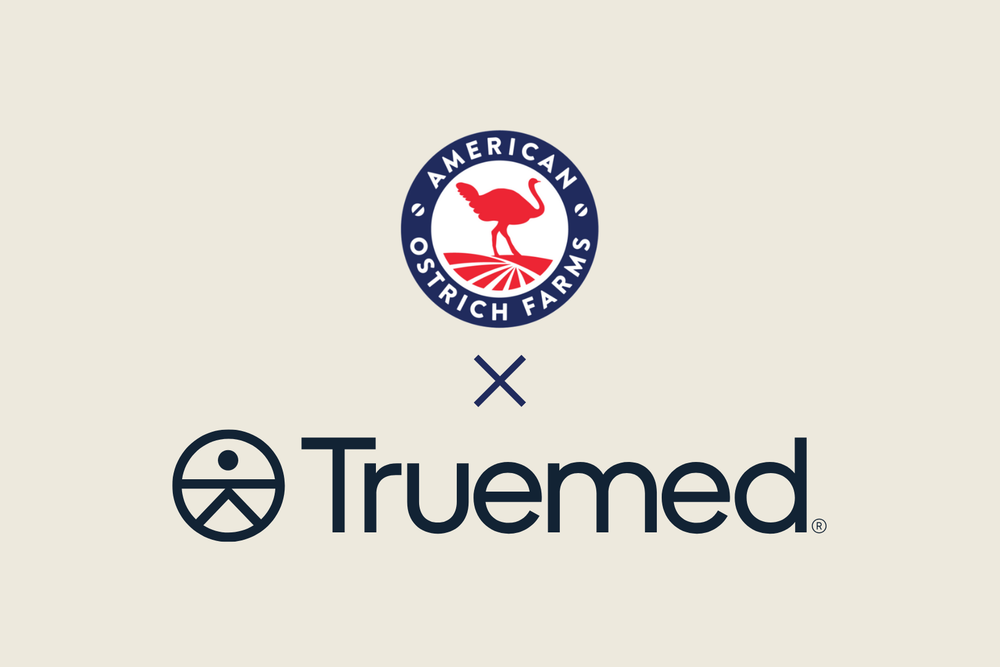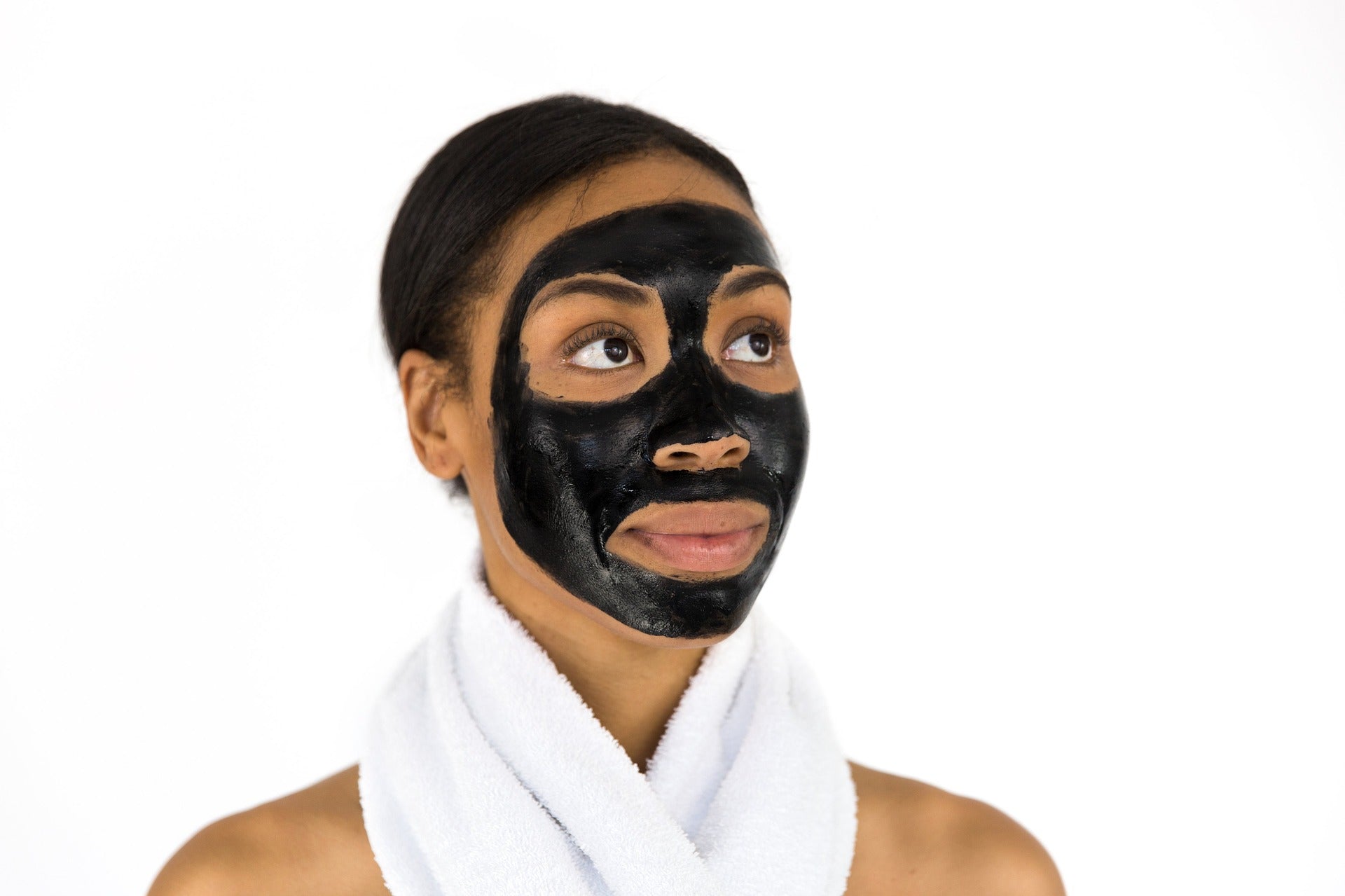A person with towels around their upper body and neck wears a black cosmetic face mask while holding up the jar of skin treatment cream.
THE GROWTH OF THE SKIN CARE MARKET
The prestige beauty market is booming; in 2018, the industry generated over $18 billion in sales. Within this industry, skincare has seen considerable growth over the makeup, fragrance, and hair sectors.
This industry continues to evolve to pinpoint more target audiences and provide more avenues for sales. Skin care has transformed to include natural, zero-waste products and more sustainable supply chains to appease discerning customers who increasingly care where their products come from and how they are made. These adaptations in skin care products are appealing to more customers, and companies are continually creating new ways to provide effective, safe, and environmentally friendly products to keep consumers happy.
The industry has been changing for decades, and it is worth looking to see where it will be in the future.
A BRIEF HISTORY OF SKIN CARE
Skin care and cosmetics can be traced all the way back to ancient Egypt. Some say that the ancient Egyptians helped shape many beauty rituals of today. There is evidence that both men and women used eyeshadow, lipstick, eyeliner, and rouge. In the 1960s, Elizabeth Taylor famously played the Egyptian queen Cleopatra, and helped to make the “cat-eye” makeup look popular.
ANCIENT BEAUTY REGIMENS
While the ancient Egyptians liberally applied makeup, other ancient cultures also exfoliated with sea salts, moisturized with milk baths, used oils to make their skin softer and reduce inflammation, and made soaps to cleanse their skin.
Greco-Roman archaeological research has suggested that these societies made creams from animal fat, starch, and tin oxide. Women may have also used juice, honey, plants, myrrh, frankincense, vinegar, olive oil, almond oil, and even animal urine for various skin care and beauty rituals. While you may not want to use animal urine, tin oxide, or other harmful things on your face, the Greco Romans may be an example of why there has been a shift in natural cosmetics, trending to natural oils and soaps.
Women in the Renaissance wanted to look pasty white and would use mercury, chalk, and lead powder to remove blemishes from their faces. They also used herbs, honey, oatmeal, vinegar, and rosewater for their beauty routines.
MODERN DAY SKIN CARE
Although skin care products such as Chapstick, Vaseline, and baby powder were invented in the 1800s, the 1900s (following on the heels of the industrial revolution) are really where we see the industry take off. Products the became widespread during this time range from sunscreen to Botox treatments, and this is where we start to see large cosmetic companies making their mark. Eventually, the need for regulation became apparent, and the Federal Food, Drug, and Cosmetic Act of 1938 set the stage for important, but basic consumer protections, and a growing awareness of what ingredients and production systems were behind mainstream brands and products.
FDA regulations on cosmetics and skin care products have seen several additional laws passed, putting more stringent requirements on labeling and packaging. However, even as protections have expanded, the FDA has not kept pace with all that we are learning about the safety and sustainability of topical products and regulations continue to allow many ingredients that savvy consumers do not want in their skin care. Consumers also still struggle to understand how to read product labels and the impact of different ingredients on their skin, and the environment.
As consumer awareness grew and trends changed, the environmental movement finally began to assert itself in the beauty and cosmetics industry. Consumers started influencing the skin care market in the 1980s when they began choosing natural skin care products over others, and began asking more pointed questions about how products were made and what they contained.
More recently, consumers have taken it upon themselves to demand ethical, sustainable sourcing and ingredients; they may prefer pure, natural oils and artisan soaps over the complex, chemically-dense ingredients lists on many products. The consumer-led search for sustainable and natural skincare products has yielded products like all-natural ostrich oils and soaps for their 100% natural moisturizing and healing properties.
SOCIAL MEDIA'S INFLUENCE
Through social media marketing, brands from virtually every industry are finding enormous success in reaching their target audiences and selling their products. The beauty and skin care industry's recent explosion has been mostly due to social media and the unique marketing opportunities skin care brands have taken advantage of.
INSTRUCTIONALS AND DIY
Before social media, it was customary to go to a makeup counter to try different products. Rather than go to the mall, you can now discover new skincare products, read reviews, watch videos on how products work or are applied, and find out new skincare routines from your own home. There are an abundance of social media channels where someone will review products in a video from unboxing to application and commentary on look, feel, and efficacy. You’ll learn about the consistency, if it’s too oily, if it itches, or anything else you might like to know before making a purchase.
INFLUENCERS AND CELEBRITY ENDORSEMENTS
Social ads using augmented reality, virtual reality, filters, and more can engage skin care consumers more effectively than standard ads. Influencer marketing — celebrities and social media figures endorsing a product — make up a large part of the clickshare of the 45% of consumers who mainly look to consumer reviews for online research prior to purchasing. It could very well be a professional influencer who performs the product reviews you find when you are doing your research on a particular skin care product.
K-BEAUTY AND NOVEL NATURAL INGREDIENTS
One recent skin care and beauty trend born out of social media is K-beauty. This Korean influence on skin care routines and products has become mainstream with social media, and has expanded to many other countries, including the U.S. Korean skin care products are being exported worldwide, and Korean influencers are gaining massive followings promoting these products. K-beauty beauty principals work to facilitate a youthful look with natural products such as soybeans and tea leaves. Unconventional products also include mushrooms, snail mucus, and kelp.
THE RISE OF HEALTH CONSCIOUSNESS
In the information age it is much easier to become more aware of our diets and lifestyles and consumers are taking a stand on what they put in and on their bodies. This is not only affecting the food and beverage industry, but health consciousness is driving skin care companies to reinvent their consumer marketing by changing the ingredients they put into their products and even providing different products altogether. Many common ingredients used in skin care products have traditionally been detrimental to your health. Today, we see a wave of natural skin care products people can feel confident using safety.
People do not want unhealthy ingredients in something they will put onto their body and face, as what you put on your skin is readily absorbed into your bloodstream — skin is the largest human organ, after all. Many skin care companies have listened and adapted to these preferences. It doesn’t matter if it is driven by money or morals; to stand out and survive as a skin care company, more businesses are providing natural moisturizing oils and soaps from unconventional yet highly effective and healthy sources.
SKIN CARE REGIMES AND ROUTINES
More complex daily routines including cleansers, moisturizers, toners, and various face and skin care products are becoming increasingly popular. Being increasingly health-conscious, keeping up with social media trends, finding hot new products, and wanting to look their best are all reasons people might turn to influencers and skin care brands to help them map out the best natural skincare routines.
SUSTAINABILITY AND SKIN CARE
Just as there has been a shift in health consciousness, consumers may also want environmentally conscious products. At times these two may overlap — as many ingredients that are unfriendly to the environment are also unhealthy for your body as well. It is not enough just to be healthy, however. Consumers are beginning to prefer no waste packaging, showing that concern about sustainability and the environment truly applies to products both inside and out.
Given the duration and variety of skin care trends and cosmetic industries throughout history, there appears to be plenty of innovation and transformation left to undertake. Consumers continue to have a dynamic relationship with beauty brands and producers, asking for more while fostering a thriving community of fans, influencers, and visionaries.






